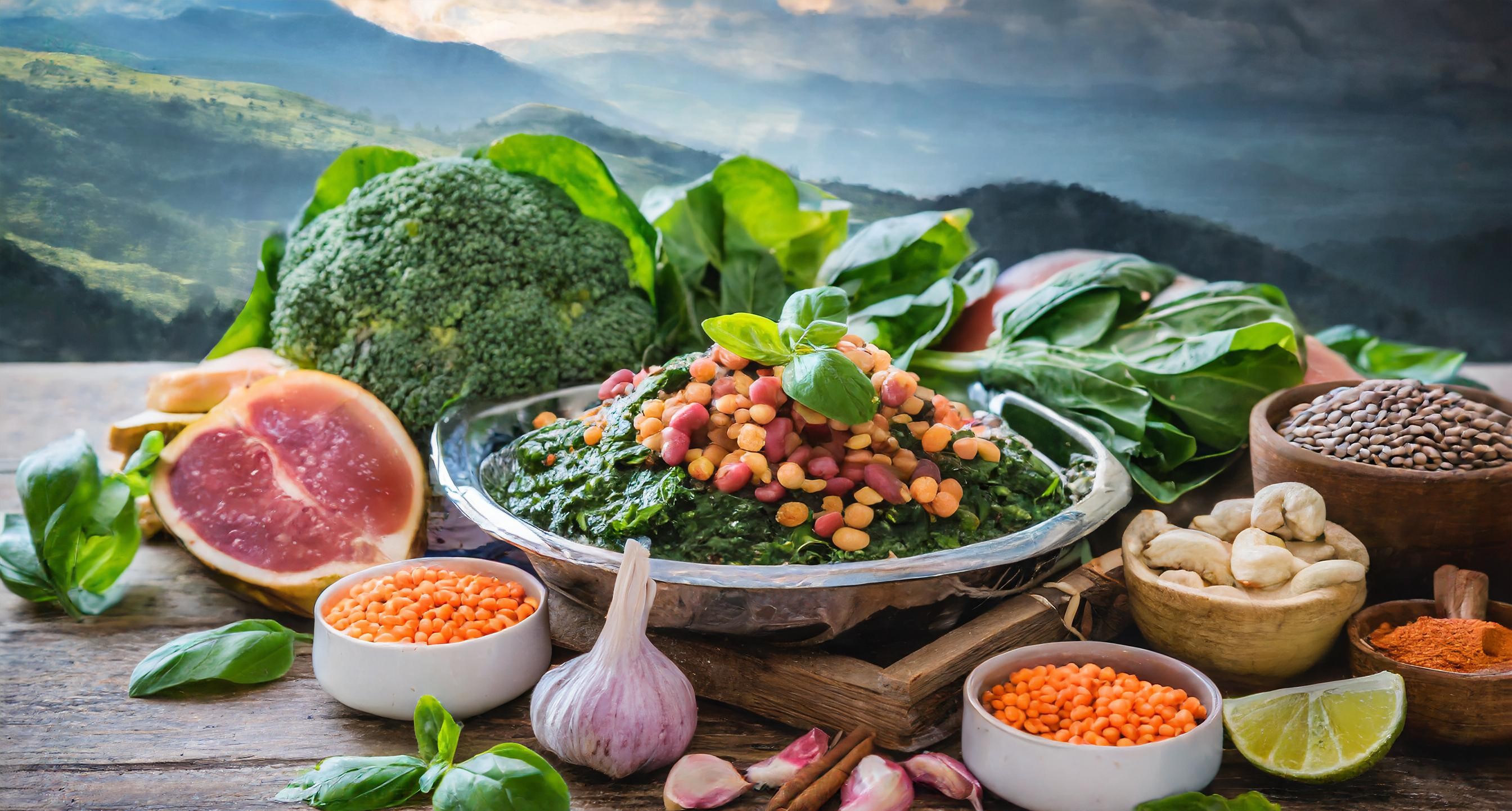Iron is an essential mineral that plays a crucial role in various bodily functions, particularly in the production of hemoglobin, a protein in red blood cells that transports oxygen throughout the body. Iron also helps maintain healthy muscles and supports the production of enzymes that aid in digestion and metabolism. Deficiency of iron can lead to Anemia.
ICMR Recommended Dietary Allowance of iron:
|
Groups |
Iron (mg/day) |
|
Man |
17 |
|
Women |
21 |
|
Pregnancy |
35 |
|
Lactating |
35 |
|
Infants |
|
|
6-12 month |
05 |
|
Children |
|
|
1-3 years |
09 |
|
4-6 years |
13 |
|
7-9 years |
16 |
|
Boys |
|
|
10-12 years |
21 |
|
13-15 years |
32 |
|
16-17 years |
28 |
|
Girls |
|
|
10-12 years |
27 |
|
13-15 years |
27 |
|
16-17 years |
26 |
Sources:
Heme Iron
Found in animal-based foods, particularly red meats, poultry, and fish.
The liver is the best source of iron.
Heme iron is more readily taken up by the body compared to its non-heme counterpart.
Non-Heme iron
Found in plant-based foods, cereals, millets, pulses, and green leafy vegetables.
The inclusion of 50gm of green leafy vegetables which are rich in iron can meet a fair proportion of iron needs.
Not as easily absorbed as heme iron, but absorption can be improved by consuming vitamin C-rich foods.
Iron Content of Plants and Animal Foods
|
Plant Foods (nonheme Iron) |
Iron mg/gm |
Animal foods(heme iron/) |
Iron mg/gm |
|
Garden cress seeds |
100 |
Crab muscle |
21 |
|
Mango powder |
45 |
Ribbon fish fresh |
14 |
|
Cauliflowers greens |
40 |
Herring |
9 |
|
Manathakkali leaves |
21 |
Liver sheep |
6 |
|
Rice flakes |
20 |
prawn |
5 |
|
Mint |
16 |
Mackerel |
5 |
|
Paruppukeerai |
15 |
Mutton muscle |
3 |
|
soybean |
10 |
Sardines |
3 |
|
Colocasia Leaves |
10 |
Pomfrets black |
2 |
|
Bengal gram roasted |
10 |
beef |
1 |
|
Gingelly seeds |
9 |
Rohu |
1 |
|
Cowpea |
9 |
Pork Muscle |
2 |
|
Bajra |
8 |
||
|
Onion Stalks |
7 |
||
|
Dates dried |
7 |
Factors That Inhibit The Iron Absorption
Low Gastric Acidity:
Decreased secretion of hydrochloric acid in the stomach, overconsumption of antacids, or gastric surgery can lead to decreased absorption of nonheme iron.
Increased Gastric Motility:
Dietary fiber like hemicellulose causes a reduction in iron absorption. Cellulose has no such effect. Fiber decreases iron absorption by promoting faster bowel movements. Foods high in fibre are also high in phytate whose absorption strongly inhibits iron absorption.
Phytate:
These combine with iron and convert iron ions and covert iron into an insoluble form that is unavailable to the body. Whole grains, bran, and soy products contain phytic acid, an organic compound that includes phosphorus. Ascorbic acid in sufficient amounts can partly counteract this inhibition. Fermentation degrades phytate and increases absorption.
Polyphenols:
These are organic compounds present in coffee, tea, cocoa, and some vegetables. They can reduce the absorption of iron from a meal by as much as 70% by their ability to form insoluble complexes with iron. Drinking tea with main meals is probably an important factor for iron deficiency.
Nontissue Protein:-
Nontissue protein sources such as milk, cheese, and eggs decrease iron absorption.
Minerals:
Cobalt, zinc, cadmium, copper, and molybdenum are competitive absorption inhibitor inhibitors for iron. Manganese and iron appear to share the same absorption pathway. One which is taken in high quantity can inhibit the other. Calcium interferes with the absorption of heme and nonheme iron in mucosal cells.
Factors that help in Iron Absorption:
The absorption of heme iron from meat and flesh food is better than nonheme iron derived from cereals, pulses, vegetables, and fruits. The liver is an excellent source of iron. The absorption of non-heme iron could however be enhanced by increased vitamin C content in the diet
Consuming sprouted pulses regularly after giving some heat treatment as sprouting increases the bioavailability of iron as well as increases the content of vitamin C and B- complex in the grain and heating destroys the inhibiting factors.
Incorporating green leafy vegetables, seasonal vegetables, and fruits in the diet helps to meet iron needs.
In an Ethiopian study, it was found that iron pots released significantly more available food than other pots.
Fortified food like salt with iron has been considered as one of the practical approaches for prevention and control.
Conclusion:
Maintaining an appropriate level of iron intake is important for overall health. If you have specific dietary needs or health concerns, it's best to consult a healthcare provider or registered dietitian

